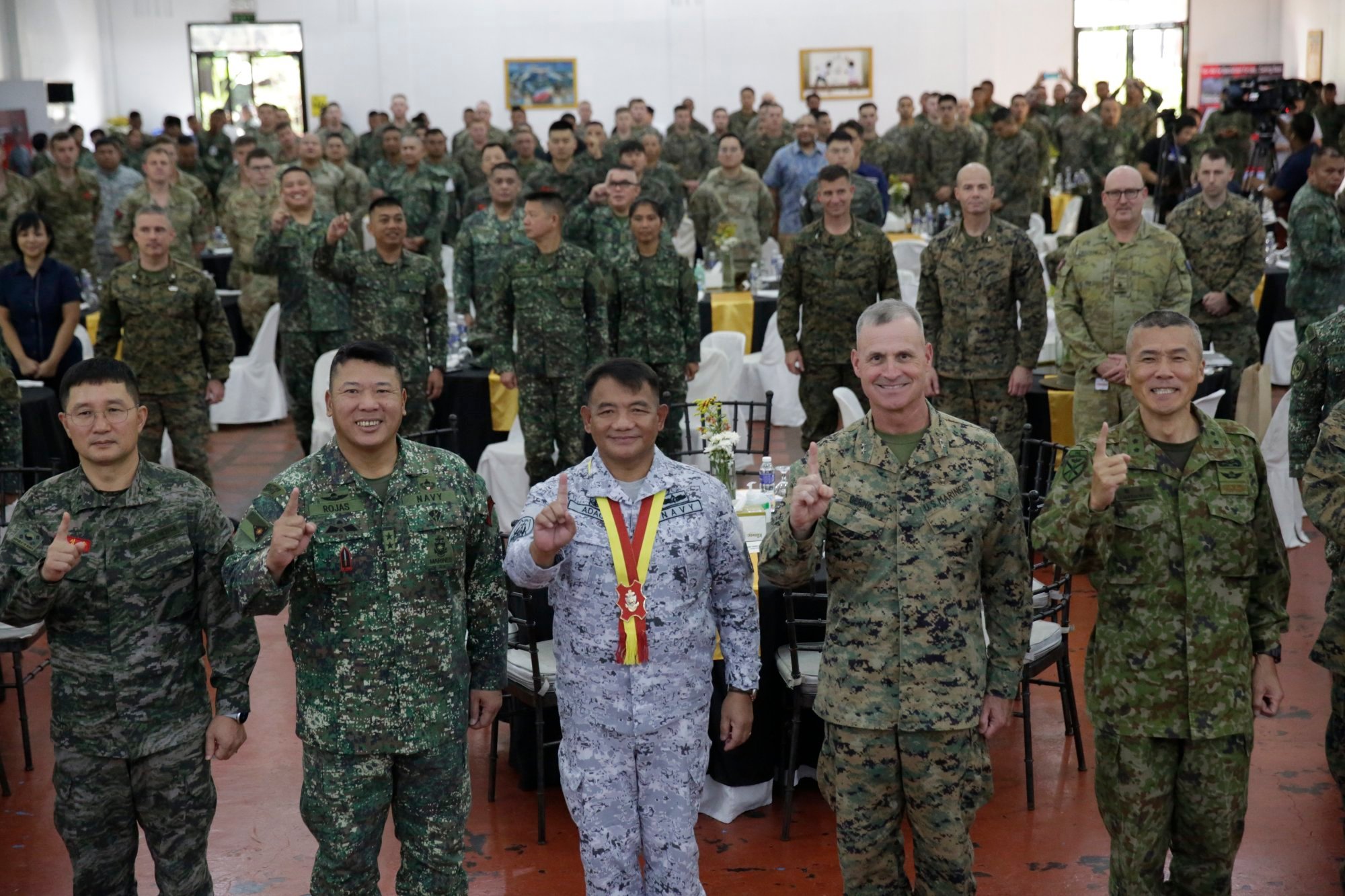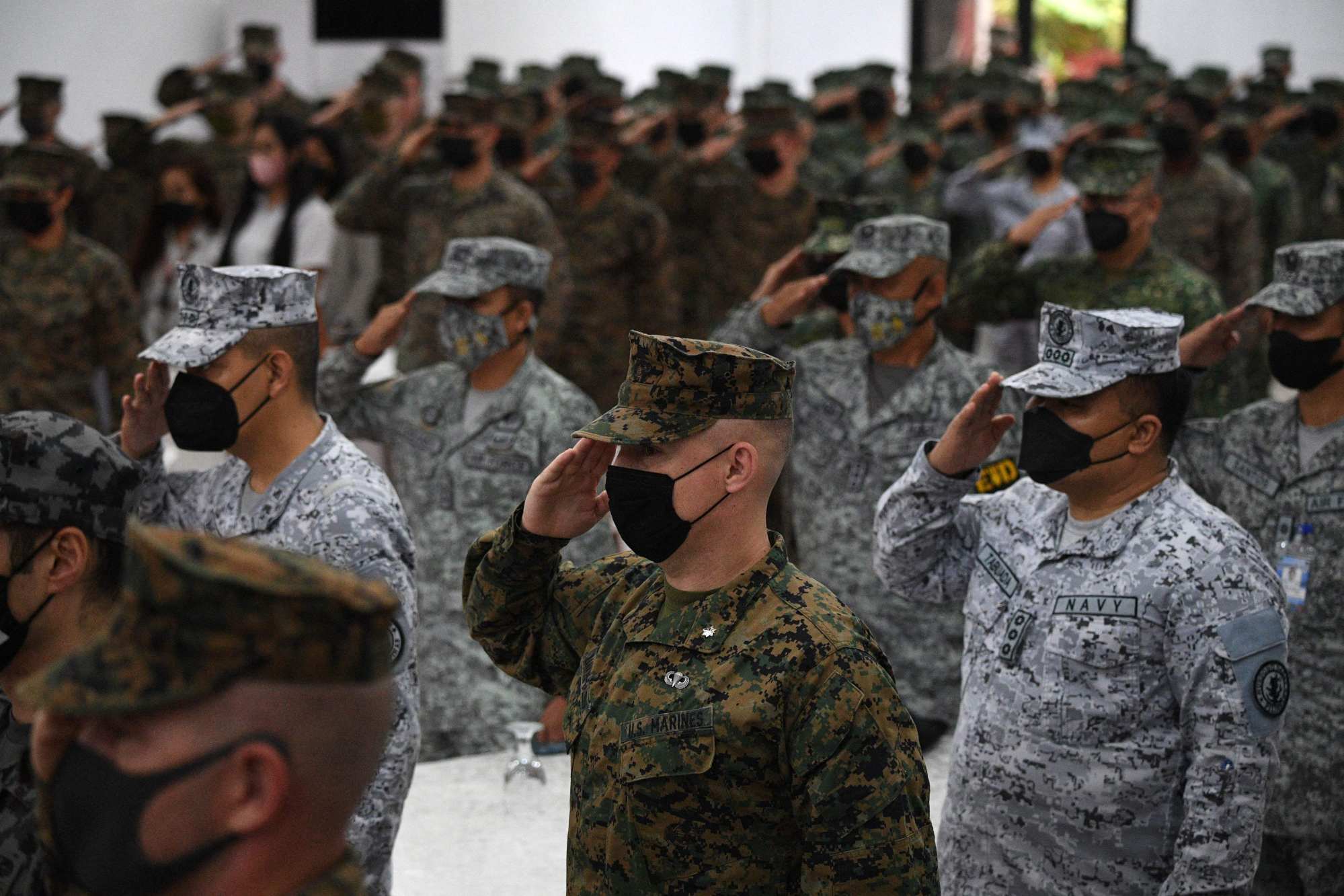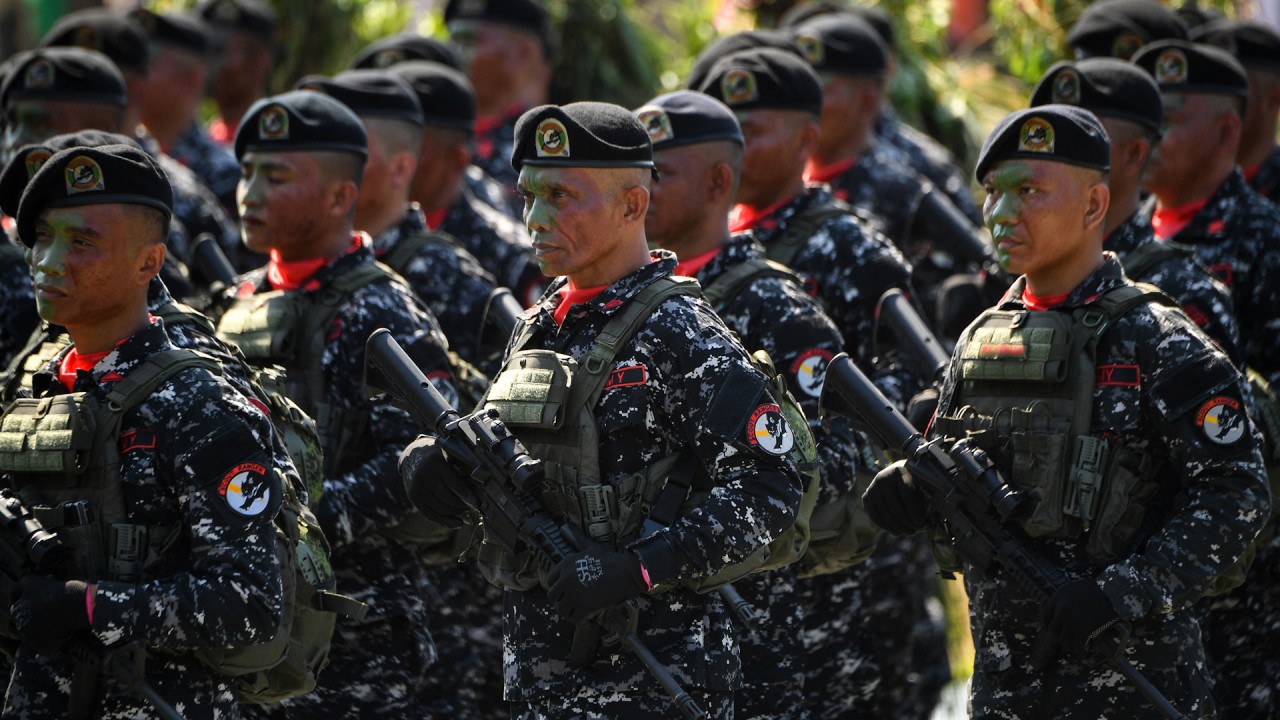An Indo-Pacific show of force? Philippines, US and allies step up military readiness amid regional tensions
An 11-day joint military exercise involving nearly 3,000 members of elite forces from the Philippines, United States, Japan, South Korea and Britain is under way and focused on “interoperability” to counter any crisis in the Indo-Pacific region, as geopolitical tensions mount in the south and east China seas.
“Kamandag 7” is part of a series of training exercises across Southeast Asia comprising 2,749 personnel, including 902 US marines. Some of the Americans hail from a newly created fighting unit, formed by the US last year to be the first responder in the Indo-Pacific.
Analysts say the show of force, extended to other countries from an initial US-Philippine partnership, marks heightened US interest in how it would deploy troops in the region according to perceived challenges.

Kamandag 7, hosted by the Philippines, is not aimed at China or any other country, Marine Navy Captain Jarald Rea, the Philippine Marine Corps public affairs office director, told This Week in Asia on Tuesday.
“It is not aimed at any existing conflict but is purely an exercise that is scheduled. The emphasis is interoperability because they [the participating countries] are part of the Indo-Pacific region,” he said.
At the exercise’s launch on November 9, Philippine Marine Corps commandant Major General Arturo Roxas said: “Together, we send a powerful message to the world, especially to those who may seek to disrupt the peace: that our partnership is unbreakable, our resolve unyielding, and our commitment to defending our nations is always unwavering.”
US Defence Secretary Lloyd Austin expressed a similar sentiment on Wednesday at the Asean Defence Ministers’ Meeting-Plus in Jakarta, when he told Philippine defence chief Gilberto Teodoro that the US “stands shoulder to shoulder … in defending its sovereign rights and jurisdiction in its exclusive economic zone”.
More than 1,700 Philippine marines stationed across the country are taking part in Kamandag 7, and are joined by members of the Japanese Ground Self-Defence Force, Republic of Korea Marine Corps and “observers” from the United Kingdom’s Royal Marines.
Marines-only exercise
Rea explained that Kamandag, now into its seventh iteration, was designed only for marines because they operate mostly in littoral zones using sea, land and air assets. The term is an acronym in Tagalog for “warriors of the sea”, but also doubles up in the Filipino language to mean poison or potency.
Kamandag was rolled out in 2016 as a US-Philippine marines exercise but has since expanded to include other nationalities.
The ongoing exercise is being conducted in various strategic spots including the Philippines’ northernmost island Batanes, which is about 200km from Taiwan, and Palawan island facing the West Philippine Sea which already hosts a US facility under the Enhanced Defence Cooperation Agreement (EDCA).
Kamandag 7 will see Philippine marines sharing their own martial arts programme derived from the century-old Pekiti-Tirsia Kali, a Filipino style of lethal close combat using bare hands, improvised weapons and various blades and pointed objects.
Other activities include expert exchanges on explosive ordnance disposal, coastal defence drills, mortar familiarisation, tactical combat casualty care, basic photography and map appreciation.
US, Australia, Japan would join Philippines-China ‘fight’, says analyst
US, Australia, Japan would join Philippines-China ‘fight’, says analyst
Earlier this week, Philippine and US marines planned operations using a “terrain model of Palawan/West Philippines Sea dispositions of Philippine and Chinese features and ships” during a joint corporals course held by the US Marine Rotational Force-Southeast Asia (MRF-SEA), said Aaron-Matthew Lariosa, a Washington-based defence journalist who writes for the US Naval Institute and Naval News.
The one-year-old MRF-SEA has been designated lead unit in Kamandag 7 and other training missions in Southeast Asia.
Lariosa told This Week in Asia that the MRF-SEA “is a tailor-made formation for the challenges the Americans see in the region, specifically in training with local militaries”.
He said a permanent rotational presence of the MRF-SEA in the Philippines had yet to be determined, but the EDCA sites in northern Luzon could play host to a possible deployment.

Deploying from continental US was also “invaluable” because it draws the US Marine Corps’ I Marine Expeditionary Force into the Indo-Pacific region, enabling it to “know the environment” and be familiar with the “development of strategies such as Force Design 2030”, Lariosa said.
Force Design 2030 refers to the current reshaping of the US Marines’ overall strategy with a focus on the Indo-Pacific, according to a 2020 US Marine Corps report.
“As part of the US’ increased prioritisation of the Indo-Pacific region, the MRF-SEA was created specifically for forward positioning in Southeast Asia,” Filipino-Australian defence consultant Max Montero told This Week in Asia on Monday.
As Japan and Philippines eye defence deal, could trilateral pact with US be next?
As Japan and Philippines eye defence deal, could trilateral pact with US be next?
“The unit will be more optimised to work in collaboration with Southeast Asian allies and partners, and be the first responder to regional crises until further reinforcements … have been deployed,” Montero added.
“This gives the US Marine Corps a faster response time and [more] active deterrence … as part of the US commitment to a free and open Indo-Pacific and defending its treaty allies.”
Montero said it was highly likely for the US to deploy specific MRF-SEA units in northern Philippines to observe Chinese military movement in the Pacific.
Earlier this month, China’s foreign affairs ministry expressed “serious concerns” over increased US military deployment in the region.


